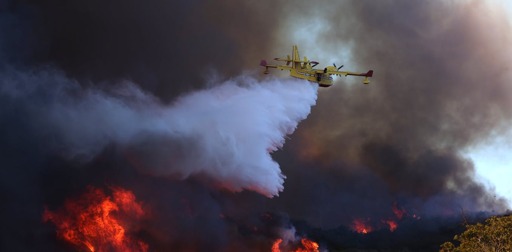Saltwater corrodes firefighting equipment and may harm ecosystems, especially those like the chaparral shrublands around Los Angeles that aren’t normally exposed to seawater. Gardeners know that small amounts of salt – added, say, as fertilizer – does not harm plants, but excessive salts can stress and kill plants.



Even if you’re using metric units, area of land times height of water is a common calculation. If you have a 200 hectare plot of land that you want to plant wheat on, and know that wheat needs about 35cm of rain to thrive, but a drought comes in where you only get 10cm, then you’ll want to irrigate with 25 cm times 200 hectares = 5000 hectare cm of water. If you irrigate that volume from a 5000 hectare lake you can expect to deplete it by 1 cm, which would replenish with 0.1cm of rain if the watershed feeding that lake happens to be 50000 hectares itself. Or you could do it with square kilometers. Or square meters. The conversion itself just happens to want to stick with the area for ease of analysis, whenever talking about water use from rain or rivers or lakes.
See also the calorie (non-SI unit of energy that is still convenient for certain calculations), electron volt (non-SI unit of energy useful in quantum physics), or the watt hour (non-SI unit of energy useful for electricity use or battery capacity). These are all metric derived, but different units of the same thing (energy) based on ease of conversion in different calculations.